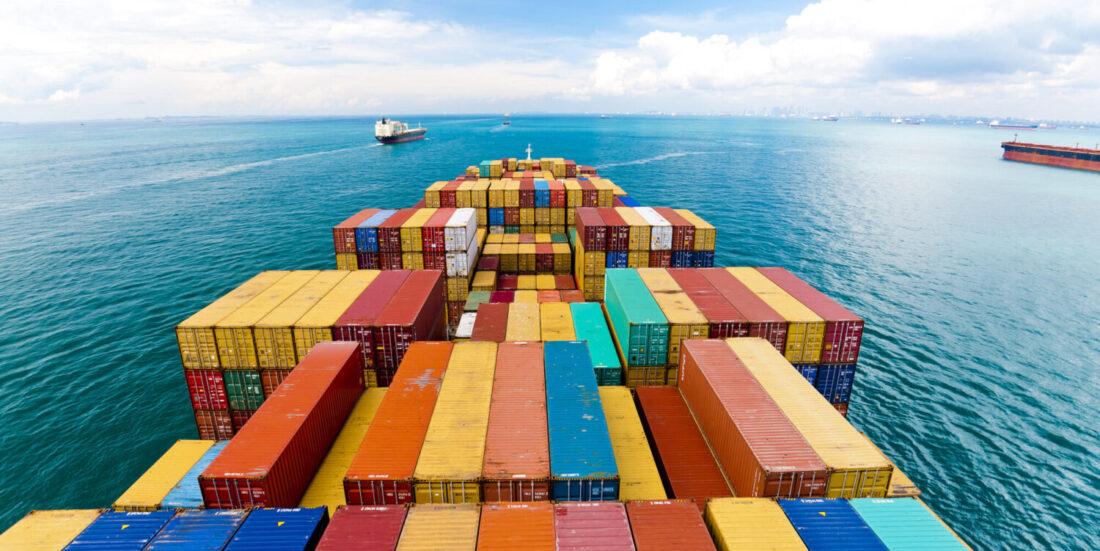When will we see a ‘Spotify’ for spare parts?
Vessel components are being transported all around the world when just a simple datafile would suffice.
Spare parts for the international shipping sector are being transported over long distances before they are finally installed. Most of this transport and warehousing could be avoided by 3D printing the parts where and when they are needed. This will save time and money and reduce greenhouse gas emissions.
Norway is a maritime nation and is in a unique position to seize these opportunities. The country is well served with shipyards, shipping companies, suppliers and classification companies that together can be described as a shipping ‘ecosystem’. Norway also operates with a public sector that is currently encouraging green innovation.
However, a joint effort is required if the 3D printing of vessel components is to become commercially viable.
Learning from streaming services
It isn’t so long ago that we were listening to our music on CDs. But all we need to do now is stream our favourite tracks from our smart phones. We can apply a similar principle to the manufacture of spare parts.
Cloud systems can be used to send digital design drawings to wherever they may be needed. It is also technically possible for a 3D printer to convert the drawings into parts made of plastic, metal or other materials at the locations where they are needed.
However, it is still the case today that physical spare parts are being transported around the world – as if they were CDs.
Companies are looking to change their ways
As part of an ongoing research project called DAVAMS, we at SINTEF have evaluated the opportunities that 3D printing offers in the field of spare parts manufacture.
We see that an increasing number of companies are showing a willingness to change their ways of working. The project is being headed by the shipping company Wilhelmsen, which is one of Norway’s biggest companies in the maritime sector. It wants to act as a link between those businesses that need the parts and the suppliers who can print them.
One of the project partners is Ivaldi, which offers expertise in the digital distribution of machine parts. Ivaldi is contributing to the project by identifying those parts that are profitable to purchase via traditional channels, and those which should be manufactured only when needed.
Critical parts can be printed
3D printing makes the manufacture of individual products faster and less expensive. The process makes it commercially viable only to make the number of parts that are strictly necessary, instead of producing for stocking warehouses and bulk purchase. Alternatively, 3D printers can manufacture temporary replacement parts that can function while the customer is waiting for an original part to be installed.
Large-scale structures such as vessels, trains and oil platforms have lifetimes of several decades. It is common for them to require the maintenance of parts that are no longer on the market. In such situations, 3D printers can be used to make excellent replacement parts.
There has been an ongoing debate as to whether parts made in this way offer the same quality as those that are machined, welded or moulded by traditional means. This issue has been resolved for the most part because classification companies such as DNV have now established production standards for 3D printing.
Many examples now exist demonstrating that printed parts perform at least as well in physical tests, so we can be sure that even critical parts can be manufactured by 3D printing.
Knocking on the door of the aviation and health sectors
Other sectors are now getting on board. The aviation and space sectors are currently using 3D printed parts to an ever-increasing extent, not least because they offer weight reductions. In the health sector, the opportunity for the individual adaptation of prosthetics has been a key driver in the production of new hips and other ‘spare parts’ for use in the human body.
A challenge related to vessel parts is that the shipping companies do not own the rights to parts design. These rights are normally held by the suppliers. Most parts suppliers operate with clear strategies as to how they position their products in the market. Some generate revenues by offering parts at short notice, others on the basis that their clients maintain large stocks in warehouses. Still others want their client to purchase new machinery rather than spare parts.
In such a system, it is the designers working for the suppliers who generate the content of the service, in the same way as musicians create the music that you listen to. And the managers of the former group currently see no profits in changing a business model that has served them well enough to date.
- Read also: Robots can identify and remove space junk
Finding business models for a spare parts ‘Spotify’
Parts suppliers now have to face up to an important question. When will the spare parts ‘Spotify’ be up and running, and what will it mean for us? One aspect is that parts that are designed for machining will most probably have to be entirely redesigned. Such a situation offers both opportunities and challenges, and the supplier companies need more expertise in the new technologies.
Our advice is to develop collaborative fora with the aim of identifying business models that incorporate all the parties involved.
One useful initiative here would be to document and highlight the benefits that 3D printing generates in the form of costs savings, quality enhancement, new services, better delivery times and less greenhouse gas emissions.
Is a maritime circular economy on the horizon?
The knowledge communities in the field of 3D printing in Norway are in the progress of organising themselves with the aim of promoting greater collaboration. However, our Scandinavian neighbours and the shipping metropolis that is Singapore are even more enthusiastic.
Wilhelmsen, Ivaldi and DNV have succeeded in utilising experience derived from Singapore in order to become world leaders in their respective roles as part of a 3D printing ‘ecosystem’.
The time has now come to elevate levels of expertise in the remainder of the Norwegian industrial sector. 3D printing serves to consolidate the circular economy, and this is good news for a maritime business sector that is becoming increasingly sustainable.
This article was first published in the daily Dagens Næringsliv on 19 March 2023 and is reproduced here with the permission of the paper.





